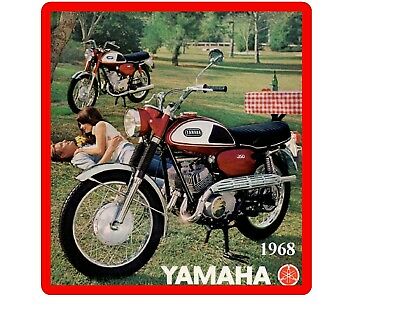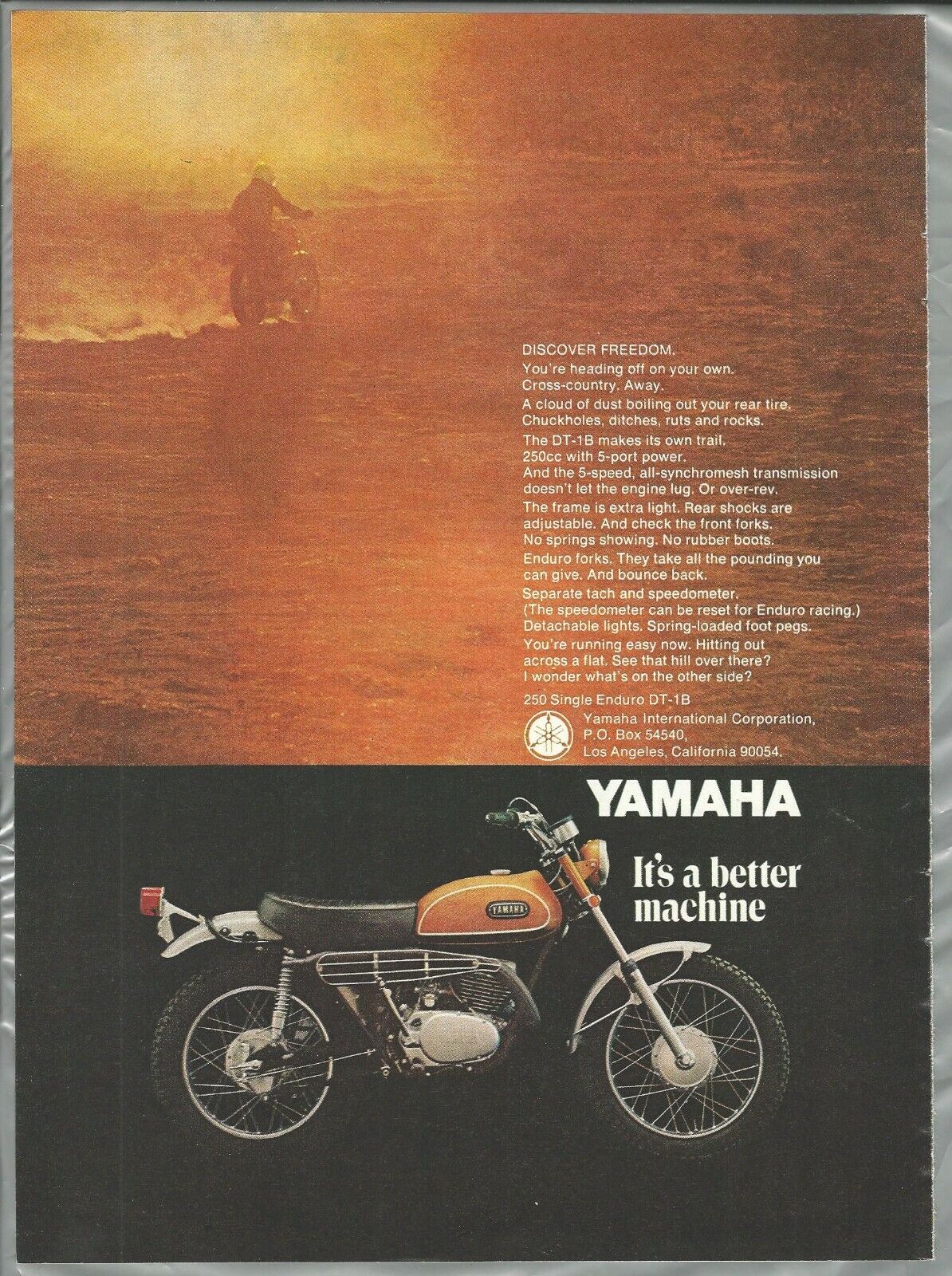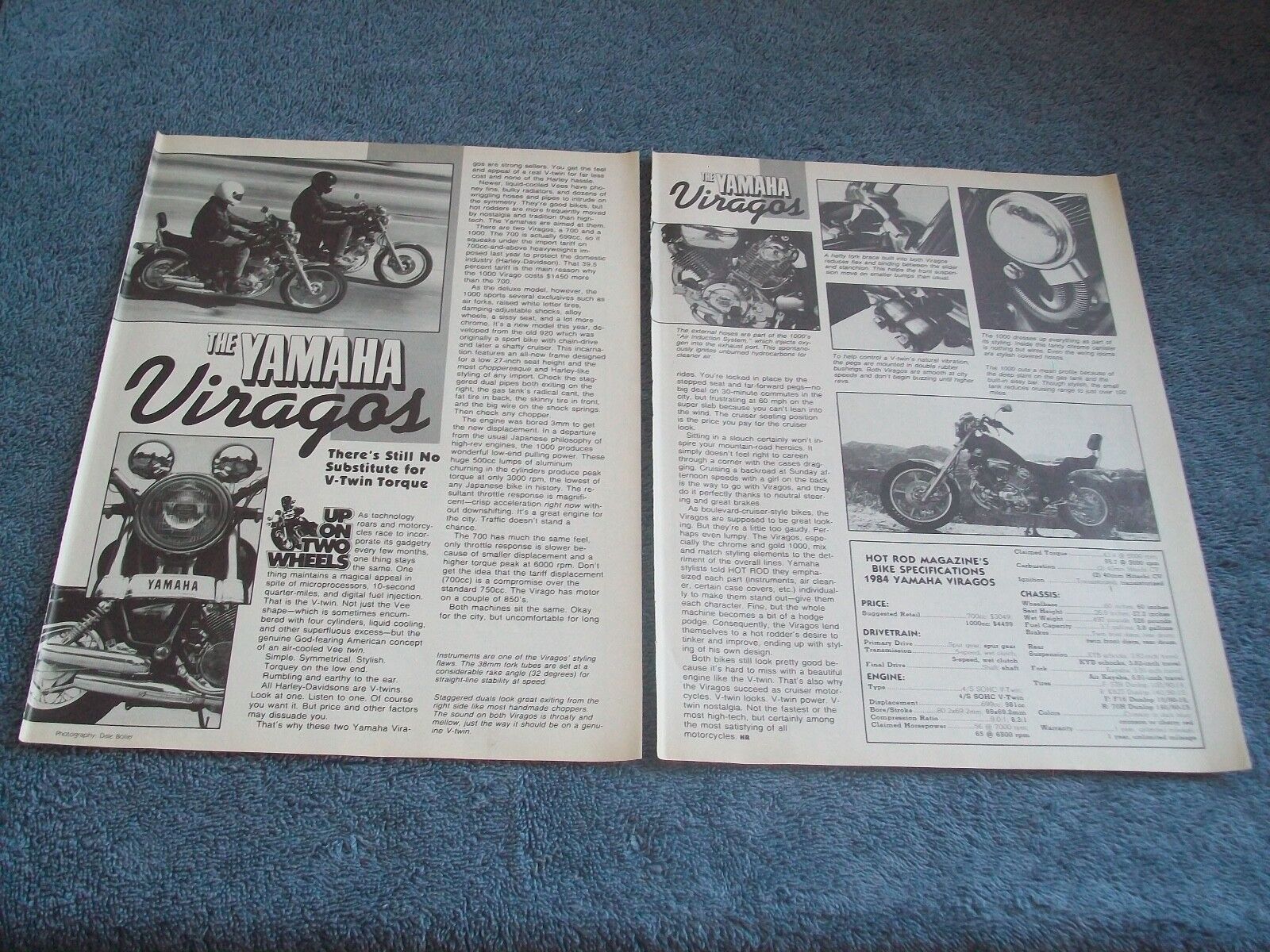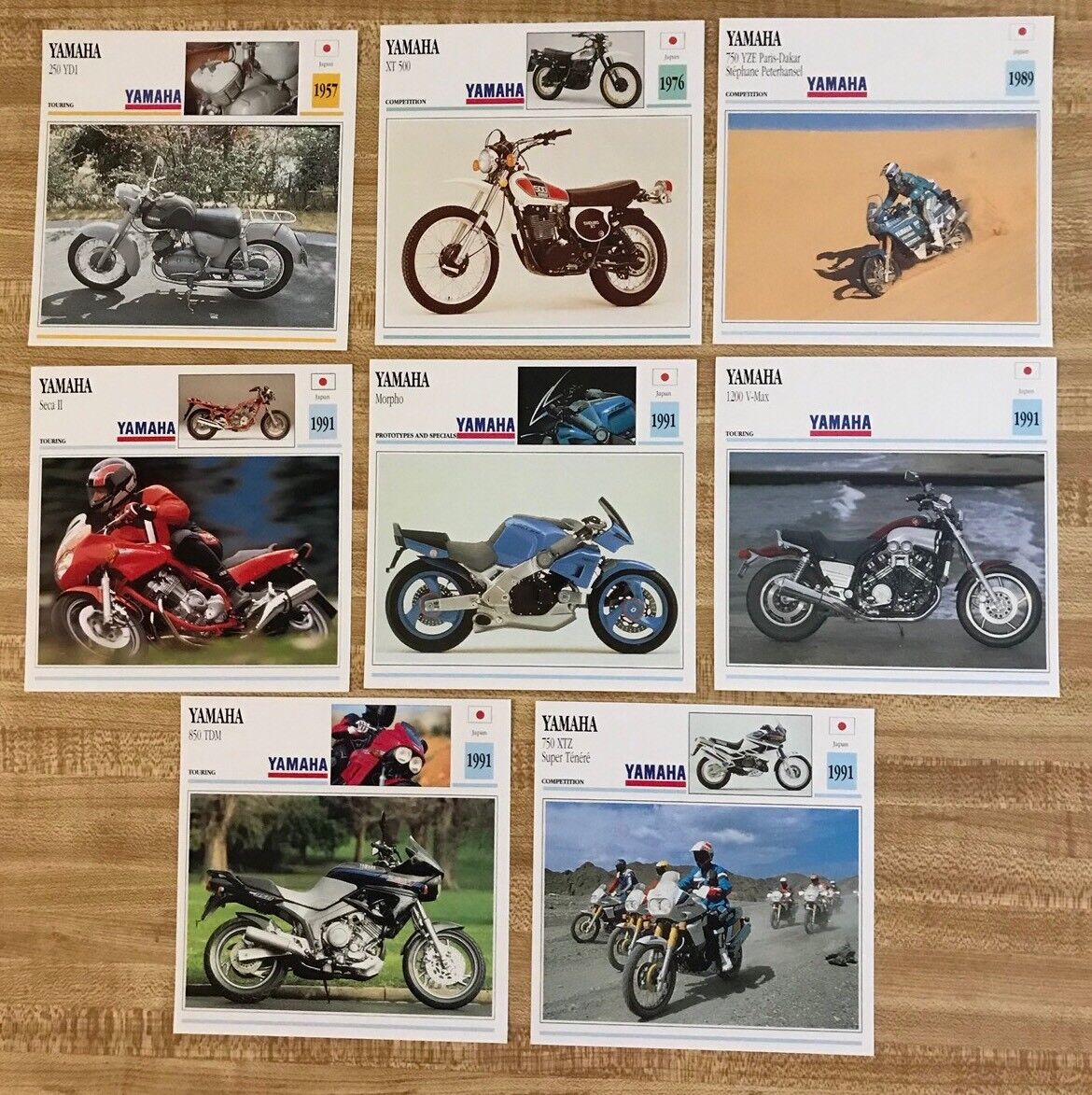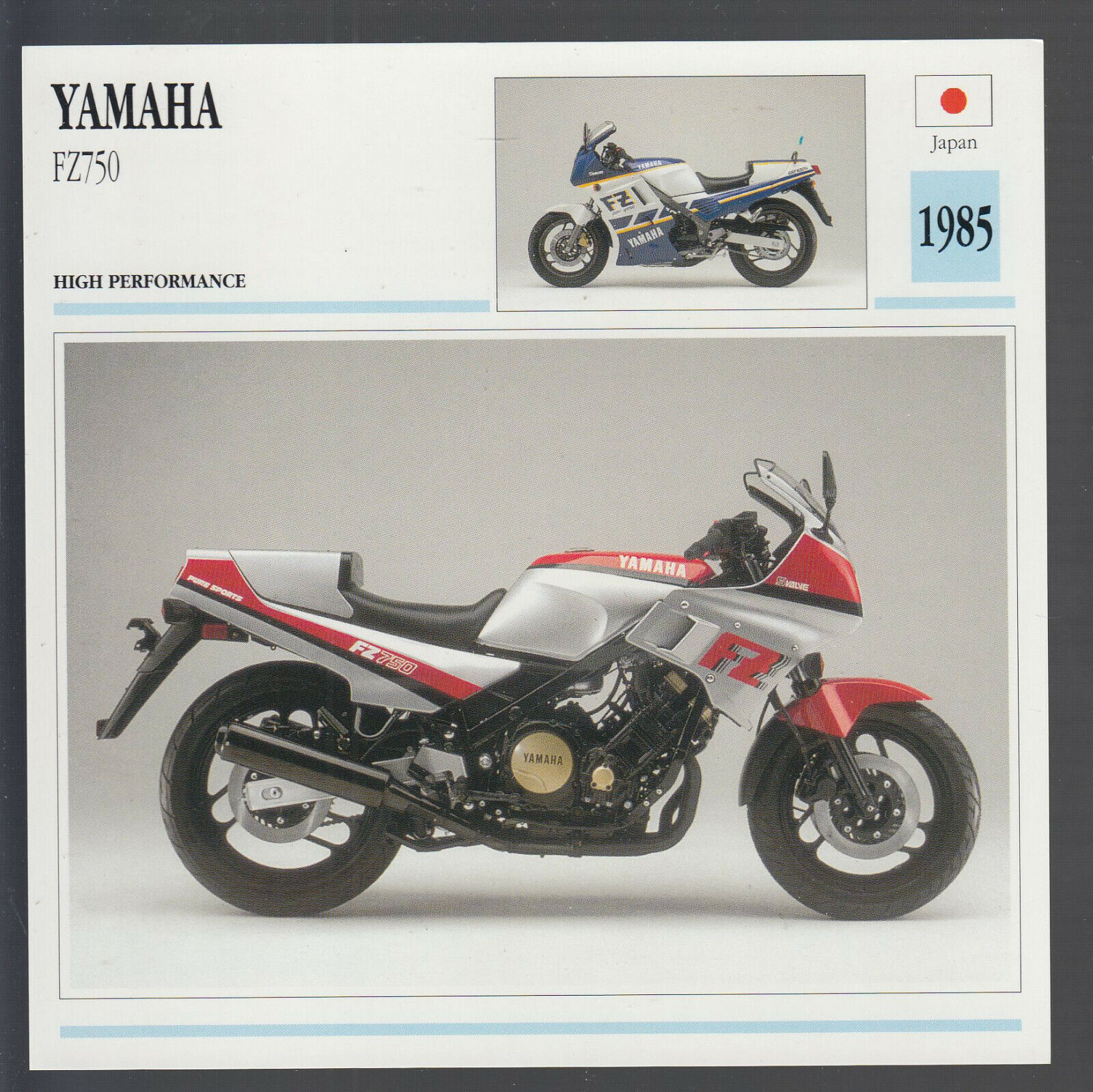-40%
1973 Yamaha 250 MX Motocross Motorcycle Road Test - 4-Page Vintage Article
$ 7.15
- Description
- Size Guide
Description
1973 Yamaha 250 MX Motocross Motorcycle Road Test - 4-Page Vintage ArticleOriginal, vintage magazine article.
Page Size: Approx. 8" x 11" (21 cm x 28 cm) each page
Condition: Good
YAMAHA 250 MX
Like the ads say, it's a better machine—better than it used to be.
There are a handful of manufac-
turers that distribute a bike of almost
every size, shape and form for almost
any type of riding that the consumer
might desire. Yamaha is among these
giants (number two in overall sales),
and during the past few months we
have tested several of their over the
counter bikes. In our last issue we had
the opportunity to thoroughly thrash
their '73 DT-3, a 250 cc dual purpose
machine, capable of cruising the free-
ways, bouncing across the desert, or
loafing along a lazy cow trail. With the
ever increasing interest in off-road
bikes and our own desire to flog a bike
with "a tiger in the tank," we ob-
tained the 250 MX, the ferocious
counterpart of the mild mannered
DT-3. The MX became a reality sev-
eral years ago when Yamaha realized
that a great many enduro owners
spent many bucks "souping up" their
old reliable. Initially Yamaha offered
a GYT kit for those interested in go
power, but then they correctly gauged
the market's eagerness for a moto-
cross specialty bike. Although their
initial efforts sold, they weren't really
the hot setup for the serious competi-
tor when compared to European ma-
chinery. But the MX improved a bit
each year, looking for the combina-
tion that would make it an out of the
box winner.
Yamaha has never lacked the ability
to build a bike that has more than
enough speed and horsepower. Look
at their domination of 2 50 road racing
and the way their 350's challenge
machinery with twice the displace-
ment. But, getting back to the dirt,
their early MX efforts feature too
much not easily used horsepower and
a chassis reminiscent of a rodeo bronc
once the throttle was turned on.
Yamaha has come a long way since
the first model, no doubt aided by
their entry into international moto-
cross. Hiring consultants like Torsten
Hallman can't hurt the product pro-
vided that what the racing people
learn works its way down to the over-
the-counter product. Yamaha has
been successful in American moto-
cross and Jaak Van Velthoven gave
them their first international Grand
Prix victory (in the 500 class) to close
out the 1 972 season. So we all know
their racing machinery is up to doing
the job. The only question seems to
be how long it will take for them to
get the Stocker sorted out. We'll point
out right now that this year's 250 MX
is by far Yamaha's best effort to build
the ultimate stock motocross weapon
but that as an all around package it
still isn't there yet. But it is encourag-
ing to sense that they really are trying
The MX sports aluminum alloy rims
front and rear. There are two security
bolts in each rim to prevent the tires
from turning on the rim during hard
acceleration or braking. All of the en-
gine's power is transmitted to the
ground through a 4.00 x 1 8" knobby.
This tire, besides throwing a lot of dirt,
offers good traction under just about
all conditions. Up front is a 3.00 x 21
knobby. This narrow tire works fine in
the dirt as it tends to go where you
put it and doesn't follow ruts or
grooves in the ground.
Getting this powerhorse stopped
was the least of our worries. The very
lightweight front alloy hub houses a
small diameter single leading shoe
brake. One of our testers felt that the
braking up front could be improved
upon but the rest of the staff didn't
concur. There was no argument as to
the effectiveness of the rear stopper.
Our opinions ranged from very good
to an opinion of too good. Minimal
pressure is all that was required to
lock the rear wheel. Those who prefer
a more forgiving brake can bevel back
the leading edge of the shoe or re-
move part of the lining to get rid of
that sensitive action We feel that a
good portion of the effectiveness of
the rear brake can be traced to the
floating back panel. This prevents
the wheel from hopping off the ground
when pressure is applied to the rear
brake.
One of the biggest improvements in
the handling department has been the
addition of a large oil reservoir on each
of the rear shocks. The primary reason
for this reservoir was to increase the
oil capacity of the rear shocks and at
the same time allow the oil to run at a
cooler temperature. This gives the
shocks better damping control for a
longer period of time
There was also a change made in
the front forks. The spring rate is the
same as the '72 model, but the damp-
ing has been improved somewhat so
that the front end doesn't hop at all.
Even before this improvement the
standard forks worked well enough to
meet the most demanding conditions.
According to Yamaha the '73 model
has a new and improved frame, but
they couldn't tell us what changes
had been made. Whether attributable
to frame changes or improved sus-...
15888



